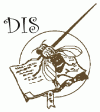



Woodruff, R.C., and J.N. Thompson, jr. 1999. A teaching exercise combining Mendelian genetics and gene therapy concepts in Drosophila.
Dros. Inf. Serv. 82: 138-140. View PDF
The following basic genetic laboratory exercise with D. melanogaster should give students an increased understanding of Mendelian genetics, including segregation, independent assortment, and sex linkage. In addition, it could be tied into an introduction to the use of the model system Drosophila in exploring the applications of gene therapy.
The objective of the one-generation cross is to identify the chromosomal location of a wild-type white gene, w+, that has been transformed as part of a P DNA element, P[w+], into an X chromosome containing a defective white gene, w1118. The attainment of this objective will confirm that these red-eyed (w1118 P[w+]) flies have their defective white gene corrected by gene therapy (see Engels, 1996, for a review of P elements, and Spradling, 1986, for a review of transformation in Drosophila). In addition, students using Mendelian genetic crosses can identify the inserted P[w+] element. From this exercise, and from discussions, the students can also learn about the genetics and regulation of the P DNA element and how this transposon is used as a gene-transfer vector and as a marker to localize, clone, and sequence genes.
In this cross, w1118
P[w+]038 females, which have red eyes, are mated with CyO/Sp; ry506 Sb P[ry+ D2-3)](99B)/TM6, Ubx males, which contain the P-element transposase source
(D2-3) on the third chromosome.
The dominant markers in these males (CyO
= Curly wings, 2nd; Sp = Sternopleural bristles, 2nd; Sb = Stubble bristles, 3rd; and Ubx = Ultrabithorax, 3rd) are used to balance the second and third chromosomes,
i.e., each of the markers is
always in the heterozygous state, since they are homozygous lethals.
See FlyBase (http://Morgan.Harvard.edu) for a complete
description of mutant markers and P insertions. Hence, the complete cross, with all genotypes is:
| Females Males |
|---|
 |
However, a more simplified cross that does not show the location of
P[w+] and D2-3 could be presented to students. In this cross, the phenotypically uninformative
ry, ry+, Sp, and
Ubx genes and the multiple-inversion
TM6 chromosome should be shown as wild types (+).
| Females Males |
|---|
 |
Students should be told that the P-element transposase source (D2-3) in males could be on the X, Y, second (CyO or CyO+), third (Sb or Sb+) or fourth chromosomes (the latter in a homozygous state), and that the P[w+] insert is in a homozygous state on either the X or an autosome (2nd, 3rd, or 4th) in the females.
From the results of this cross, ask students to determine the chromosomal location of the D2-3 transposase source in the male parents and the location of the P[w+] insert in the female parents. Students should record the F1 results in a table like the one shown here.
| Record Number of F1 Flies with Mosaic Eye Spots | ||||
|---|---|---|---|---|
| Sex | Cy (Curly wings) |
Sb (Stubble bristles) |
Cy Sb (Curly & Stubble) |
Wild type |
| Males: | ||||
| Females: | ||||
Why? |
||||
Why? |
||||
The F1 females will have red eyes, because they are w1118/+ (w1118 is a recessive mutation), whereas, one half of the F1 males will have eyes with red and white mosaic spots. These mosaic eyes are caused by white spots in which the P[w+] element has excised during fly development, yielding w1118 cells on a background of cells that are red, i.e., w1118 P[w+]. Note that for cells to be white, the P[w+] element has to excise and then not insert into a new chromosomal position, or the P[w+] element has to lose part of the white DNA during a transposition event; such imprecise P-element excisions do occur. The size of the white spots will be larger the earlier the P[w+] excisions occur during eye development.
Based on sex linkage and Mendelian genetics, the students should be able to determine that the F1 results could only be possible if the P[w+] element was part of the w1118 containing X chromosome in parental females. In addition, the F1 results should allow students to determine the chromosomal location of the D2-3 transposase source; only males that have short bristles (either Sb or Cy Sb flies) will have mosaic eyes. Hence, D2-3 must be inserted into the Sb containing third chromosome of the parental males.
In introducing this exercise to students, one could review Mendelian genetics, Drosophila cytogenetics, sex linkage, and gene symbolism. In addition, gene therapy could be reviewed, including how gene replacement was first performed in Drosophila (Spradling and Rubin, 1982; Rubin and Spradling, 1982). This could then lead to a general discussion of transposable DNA elements, how elements such as Alu and mariner have been observed to cause gene and chromosomal mutations in humans (Cooper and Krawczak, 1993), and the current status of gene therapy in humans.
References: Cooper, D.N., and M. Krawczak 1993, Human Gene Mutation, Bio Scientific Publishers, Oxford; Engels, W.R., 1996, P elements in Drosophila. wrengels@facstaff.wisc.edu ; Rubin, G.M., and A.C. Spradling 1982, Science 218: 348-353; Spradling, A.C., 1986, P element-mediated transformation. In: Drosophila - A Practical Approach (Roberts, D.B., ed.), pp. 175-197, IRL Press, Oxford; Spradling, A.C., and G.M. Rubin 1982, Science 218: 341-347.